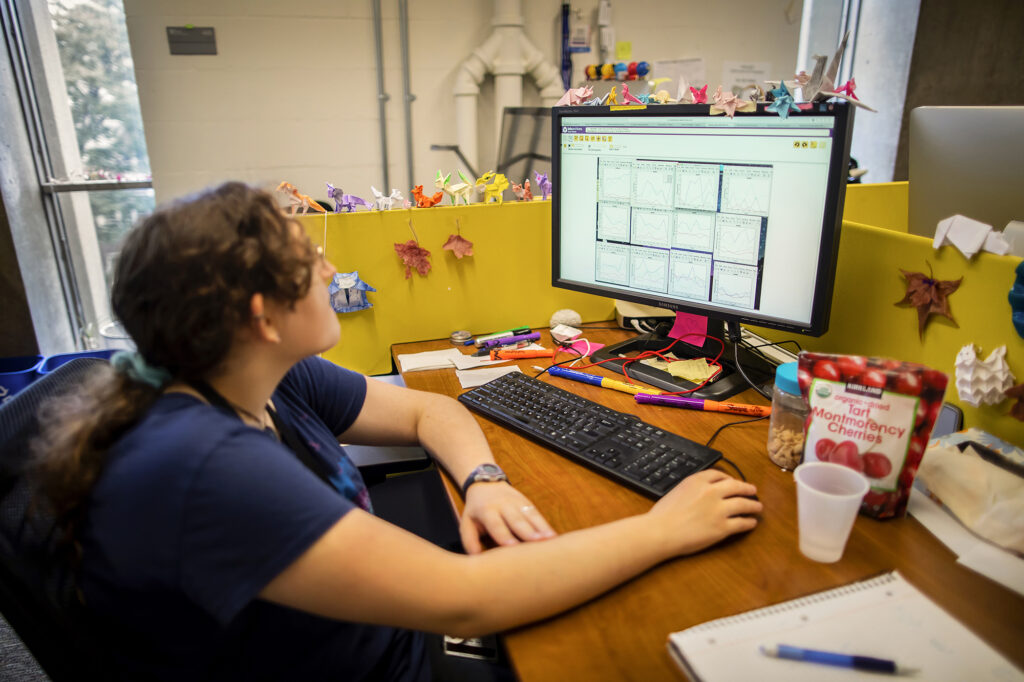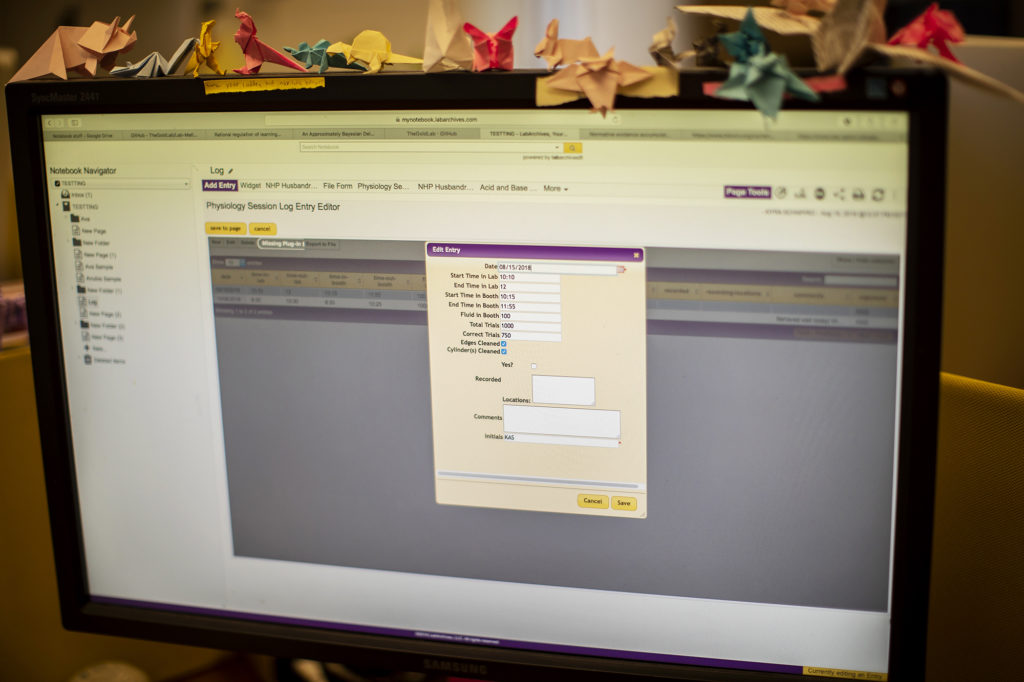Electronic Research Notebooks Streamline the Scientific Method
For a few years now, Joshua Gold, a neuroscientist at the University of Pennsylvania, had been interested in improving the way his lab’s research information, such as experimental protocols and the resulting data, was organized.

During one of Penn’s Perelman School of Medicine’s Responsible Conduct of Research training sessions for undergraduate, graduate, and postdoctoral students, Gold noted that many of the participants felt that it was hard to get up to speed when joining a new lab because of the lack of documentation.
“They said they kept running into problems trying to precisely reproduce the experiments people had done before them because records were often incomplete,” says Gold, a professor in Penn Medicine’s Department of Neuroscience.
Traditionally, scientists have used paper lab notebooks to document their experimental steps and record results. But lab notebooks are moving into the 21st century, onto computers, and into the cloud. The Office of the Vice Provost for Research is helping Penn researchers keep up, offering free access to the software platform LabArchives, a secure, cloud-based platform to store, organize, and share data.
“One of the main benefits of this platform is that it supports reproducibility and consistency,” says Dawn Bonnell, Penn’s vice provost for research. “A researcher may have 10 people working for them, and the electronic research notebook allows them to all share their data, ensure that there are uniform procedures for experiments that get documented, and do so efficiently, without running around trying to find a piece of paper where they wrote everything down. All those things contribute to the quality of the research.”

Starting in January with a pilot of 50 scientists, Bonnell’s office worked with LabArchives to provide their software to researchers at the University. Many also received training from the vendor with assistance from Penn’s Information Systems and Computing. To date, more than 900 accounts have been created by scientists around the University.
Eleonora Samarxhi, a research specialist who works in the lab of Jean Bennett, the F. M. Kirby Professor of Ophthalmology, has embraced the platform. The lab, which collaborates with a biotechnology company to develop gene therapies for diseases that cause vision loss, had been looking for data-sharing software when they learned about the availability of LabArchives at Penn. It proved an excellent fit for the lab’s needs.

“I love it as a way to not only document our work but also to share it,” says Samarxhi. “Once you create templates for your different experiments, it ends up saving time. I’ll print out what the assay will be for a given day, conduct it, get the data, and then import it directly into the program, and I set it up so it automatically gets filed in the proper place.”
The notebook software integrates with commercially available data-analysis programs to help make sense of results, and even visualize them in helpful ways. Samarxhi says it also ensures that protocols are easily comprehended by colleagues, helping smooth the process of collaboration.
“Our work builds on each other’s, so, if my coworkers need to reference something and see what I did that day, they can just go in and look,” she says. “All the charts and data are right there.”
Gold says that using LabArchives has made sharing results easier for his lab as well. “At our weekly lab meetings, we’re able to bring up the program and circulate the figures in a very organized way.”
The electronic lab notebook is intended to provide a flexible, customizable interface to fit a variety of scientific approaches. Gold’s lab uses it for a range of experiment types, from human behavior investigations and electrophysiological experiments to computational modeling and quantitative analysis.
Flexible templates can be developed for any research area, ranging from the social sciences to the physical sciences to the biomedical sciences, says Barak Zahavy, director of information systems in the Office of the Vice Provost for Research. “LabArchives provides investigators with the ability to create protocols to follow to boost the consistency of procedures as well as serving as a means to manage data in a central repository,” he says. “As a cloud-based service, it also makes data very accessible.”
LabArchives is set up so that it can be used in an educational setting as well, steeping students in the importance of consistency, thoroughness, and reproducibility. Bonnell is hopeful that the resource will help instructors reinforce those lessons for students who are just beginning to learn how to conduct quality research.
“The lab instructors are teaching them those practices anyway, so to do it in a framework that helps really reinforce those messages is a great advantage,” she says.
Members of the Penn community can begin using LabArchives by visiting https://researchnotebooks.upenn.edu/. The site also offers a variety of training videos, webinars, and other resources.
Originally published in Penn Today